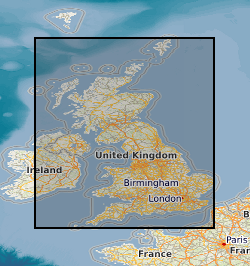Soil analysis
Type of resources
Topics
Keywords
Contact for the resource
Provided by
Years
Formats
Representation types
Update frequencies
Scale
-

Laboratory results for the analysis of soil samples collected from urban areas during the baseline geochemical mapping programme of Britain. Sample sites are described on field slips. Chemical results are subjected to high level of quality control in the laboratory. Results are the raw data processed (standardisation and normalisation) to give seamless geochemical images and the value added G-BASE (Geochemical Baseline Survey of the Environment) data in the BGS geochemistry database.
-

As an integral part of the investigations carried out at Sellafield, and to a lesser extent for the Dounreay boreholes, the cores from the boreholes were systematically examined by geologists and samples selected for detailed petrographic analysis. Thin sections were prepared from many of these samples. Some of the samples were then prepared for analysis using X-ray fluorescence, X-ray diffraction or scanning electron microscopy. Samples containing fluid inclusions were prepared as doubly polished fluid inclusion wafers. Thin sections were prepared from soil materials obtained from the investigations of the Quaternary deposits. Particular attention was given to samples of the mineralisation that was identified in the formations at Sellafield. In addition to the samples from the boreholes, there are also some samples obtained from surface exposures that were examined during the regional surveys. The samples and sections have been catalogued and incorporated into the national collection by the British Geological Survey. The ownership of NIREX (Nuclear Industry Radioactive Waste Executive) was transferred from the nuclear industry to the UK Government departments DEFRA and DTI in April 2005, and then to the UK's Nuclear Decommissioning Authority (NDA) in November 2006.
-

Profile soil analyses are available from a number of BGS programmes, notably the Mineral Reconnaissance Programme (MRP) and the Geochemical Baseline Survey of the Environment (G-BASE) programme. Sampling depth and range of analytes determined is very variable for the MRP. G-BASE samples are consistently from 35 - 50 cm though since 2003 it has become routine practice in the G-BASE project to collect a top soil and deeper profile sample from the same site but only analyses the top soil and store the profile soil. This also applies in urban areas. The G-BASE profile soils were generally sieved to 150 microns before analysis and determined by XRFS for some or all of: Mg, P, K, Ca, Ti, Mn, Fe, V, Cr, Co, Ba, Ni, Cu, Zn, Ga, As, Se, Rb, Sr, Y, Zr, Nb, Mo, Pb, Bi, Th, U, Ag, Cd, Sn, Sb, Cs, La, Ce, Ge, Sc, Se, Br, Hf, Ta, W, Tl, Te and I. MRP samples can include profile samples from greater than 1 meter collected using a power auger and also include till samples. The G-BASE samples are collected at a density of 1 sample per two square kilometres in rural areas and 4 samples every kilometre square in urban areas. MRP sampling was more site specific generally collecting soil samples along lines at spacing intervals generally 25 - 250 m.
 NERC Data Catalogue Service
NERC Data Catalogue Service